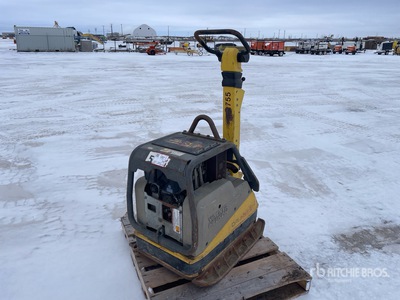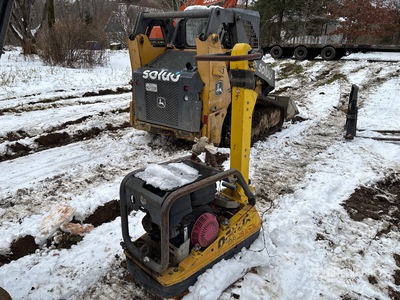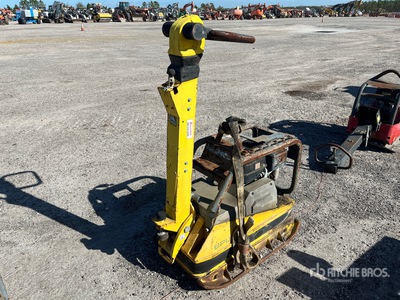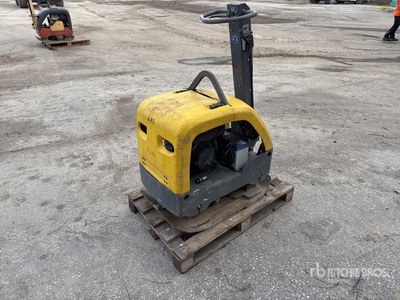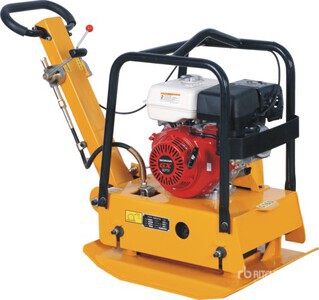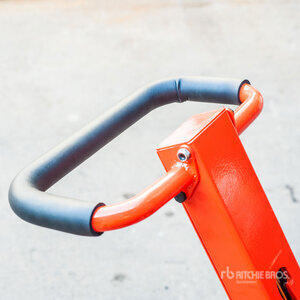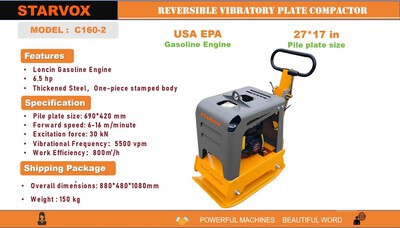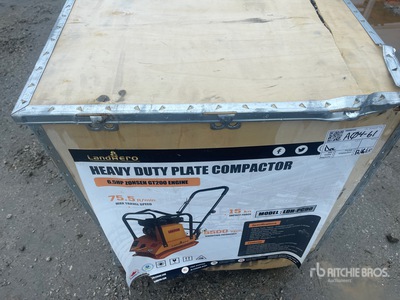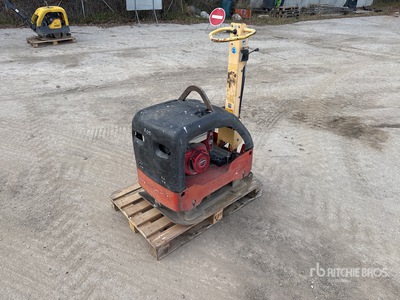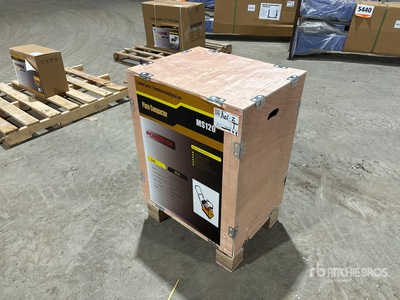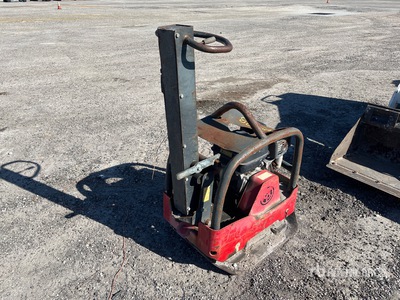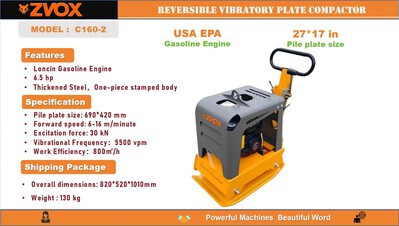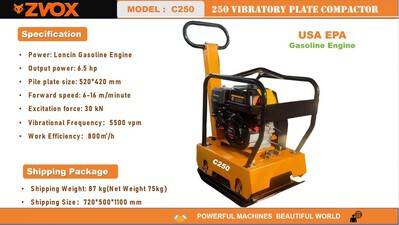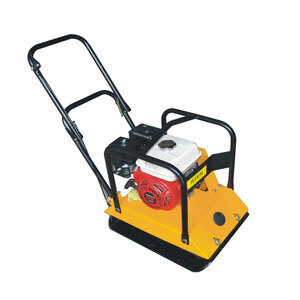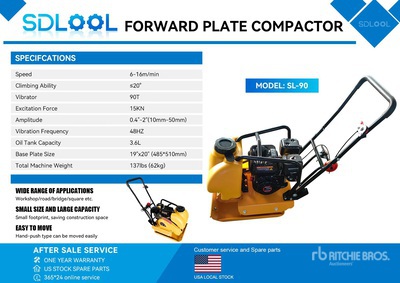Filter
Showing 0-60 of 187 results
1-60 of 187
Choosing the right vibratory plate compactor
Vibratory plate compactors, often simply called plate compactors or plate tampers, are designed to compact soil, gravel, and asphalt by combining the weight of a steel base plate with high-frequency vibration. The exciter on the machine generates vibration, which helps the plate settle and lock particles together, creating a stable base for concrete, asphalt, pavers, or other surface materials. Whether you are looking at a small plate compactor for tight areas or a heavier reversible plate compactor for larger pads, the basic goal is the same: consistent, uniform compaction.
These machines are commonly used for trench backfill, driveway and walkway prep, patching asphalt, and setting paving stones. A vibratory plate compactor or plate tamper for sale can be a core tool for contractors, rental yards, landscapers, and utility crews who need repeatable results in granular soils and base material. Excavator-mounted hydraulic plate compactors also exist for deeper trench work and hard-to-reach spots, but this content focuses mainly on walk-behind plate compactors buyers most often search for.
Key features to consider when buying a plate compactor
When you compare plate compactors side by side, looking beyond the brand name is key. The most important buying decisions come down to plate size, compaction force, engine type, vibration performance, and how you plan to use the machine on site. Understanding these factors will help you choose the best plate compactor for your work instead of simply chasing the lowest price or a familiar color.
Plate size and compaction depth
Plate size determines how much ground you can cover and how easily the compactor works in tight spaces. A mini plate compactor or small plate compactor with a narrow plate is ideal for narrow trenches, walkway edges, and confined areas, while larger plates cover more area in fewer passes on open pads or driveways. Compaction depth is driven by both plate size and centrifugal force. For dense base material under pavers, a plate compactor for pavers with enough force to reach the full lift thickness is critical to avoid settling later on.
Engine type
Most walk-behind plate compactors run on small gasoline engines, which are easy to refuel and widely supported in the field. An electric plate compactor may make sense for indoor use, tight noise regulations, or occasional homeowner projects, but gas-powered units still dominate job sites due to their portability and run time. When looking at a used plate compactor for sale, pay attention to engine starting behavior, idle quality, throttle response, and any smoke; these are simple but effective clues about how a machine has been treated.
Forward versus reversible plate compactors
Forward plate compactors move in one direction and are typically used for light to medium-duty work: walkways, small pads, and shallow lifts of granular material. They tend to be lighter and easier to handle, making them a solid choice for general contractors and landscapers. A reversible plate compactor adds the ability to move both forward and backward by reversing the vibration direction. This makes it easier to work in tight spaces, compact thicker lifts, and keep a consistent pattern without having to turn the machine around constantly. For deeper trench compaction or larger commercial pads, many buyers see the productivity gains of a reversible plate as worth the extra cost and weight.
Vibration frequency and impact force
The exciter’s vibration frequency and the machine’s centrifugal force are key performance specs. Higher frequency and properly matched force help a vibratory plate compactor work more efficiently in granular soils and base materials. Too little force can leave lifts under-compacted, while excessive force on thin lifts or delicate paver installations can cause damage. When you evaluate listings for a vibratory plate compactor for sale, look at the published force rating and recommended lift thickness to see if it lines up with how you plan to use the machine.
Water tank and asphalt capabilities
For asphalt work, a water tank turns a general-purpose plate into an asphalt plate compactor. The water system helps keep the base plate wet so hot mix does not stick and build up, which can scar the surface and reduce compaction quality. If you regularly do patching, small driveways, or pathway work in asphalt, choosing a plate compactor with a reliable water tank and spray bar can save time and improve finish quality.
Maneuverability and weight
Machine weight is a trade-off. Heavier plate compactors generally offer better compaction for a given plate size, but they are harder to transport, load, and maneuver on delicate surfaces. A small plate compactor or mini unit is easier to lift into a pickup or landscape trailer and is less likely to damage new pavers or narrow forms. Larger plates and heavier units are better suited to repeated use on open, durable surfaces where productivity matters more than finesse. Handle design, vibration isolation, and overall balance also affect how tiring the machine is to run over a full day.
Maintenance and serviceability
A plate tamper or tamper plate compactor may look simple, but regular maintenance has a big impact on life and performance. Easy access to the drive belt, exciter housing, and engine service points makes routine work faster and less likely to be skipped. When reviewing used plate compactor listings, look at the condition of the base plate, check for dents or cracks, and inspect the exciter area for signs of oil leaks or seal failures. Shock mounts, handles, and hardware should all be intact; excessive vibration at the handle often means worn mounts or neglected service.
Buying used versus new plate compactors
New plate compactors offer the reassurance of a fresh engine, unworn plate, and full manufacturer support. For contractors who run equipment daily, this can be attractive, especially when uptime is critical. However, many buyers look to a used plate compactor for sale because these machines have relatively simple components and can deliver long service lives if they have been maintained properly. With fewer electronics than larger equipment, a well-kept used unit can be a very cost-effective way to add compaction capacity to a fleet.
When comparing used versus new, consider how often you plan to use the compactor and in what conditions. Occasional jobs, rental fleet backup, or seasonal work often justify a used plate compactor that has already proven itself in the field. High utilization or specialized work like frequent asphalt compaction, heavy reversible plate use, or hydraulic plate compactor applications may lean more toward newer machines with updated features and lower initial wear. In either case, clear photos, detailed descriptions, and honest hour estimates make it easier to match the machine to your needs and budget.
Tips for evaluating a used plate compactor
Start your inspection with the base plate itself. Look for cracks, heavy gouging, or welding repairs along the edges and corners. A heavily worn or distorted plate can affect compaction quality and may indicate the machine has been pushed hard on rough surfaces. Check the exciter housing for signs of oil leaks or loose fasteners, as this can point to worn seals or neglected maintenance.
Next, focus on the engine and controls. A good used plate tamper should start reliably, idle smoothly, and respond well to throttle changes without excessive smoke. Test the vibration function and feel how quickly the machine climbs onto its plate and begins moving. Unusual noises, slow response, or harsh rattling can signal internal issues. Inspect belts, pulleys, and guard condition, and make sure the handle folds and locks correctly for transport.
If you are looking at a reversible plate compactor or a unit marketed as the best plate compactor for deeper lifts, test forward and reverse operation if possible. Engagement should be smooth and predictable, without hesitation or jerky movement. Worn shock mounts or loose handles can make the machine uncomfortable and harder to control over a full shift. Overall, the goal is to confirm that the used compactor still delivers strong, consistent vibration and is ready to go to work without needing major repairs on day one.
Plate compactor versus jumping jack tamper
Many buyers compare a vibratory plate compactor with a jumping jack or vibratory tamper when planning their fleet. The two tools overlap in purpose but excel in different conditions. A plate compactor is typically the better choice for granular soils, base gravel, and flat surfaces where you want a smooth, even finish, such as under pavers, patios, and driveways. The broad plate and vibration pattern make it easy to achieve uniform density over a larger area.
Jumping jack tampers, by contrast, concentrate force into a smaller foot and are better suited to cohesive soils and narrow trenches where you need to drive material into tight spaces. On many jobs, a combination of both tools works best: a jumping jack for narrow, deeper trench sections and a plate compactor for wider, shallower lifts and final surface prep. Understanding these differences helps ensure you choose the right compaction equipment for each stage of the job instead of expecting one tool to do everything.
Popular types you will commonly see
In the market, you will see several broad categories of plate compactors, each aimed at a slightly different buyer. Forward plate compactors are the most common all-around machines for general construction, landscaping, and small contractor use. Reversible plate compactors add productivity and flexibility on larger pads and trenches, where back-and-forth movement without turning saves time and effort. Mini and small plate compactors serve tight spaces and lighter-duty work, making them a good fit for residential jobs or as a supplemental tool in larger fleets.
You will also encounter asphalt-focused plate compactors with integrated water tanks for hot mix work, as well as excavator plate compactors and hydraulic plate compactors designed to mount on carriers for deeper trenches and difficult access. Regardless of the type, the same basic principles apply: match plate size, vibration force, and machine weight to the materials and layer thickness you plan to compact. With that approach, whether you are buying new or used, you are far more likely to end up with the right plate compactor for your business.
